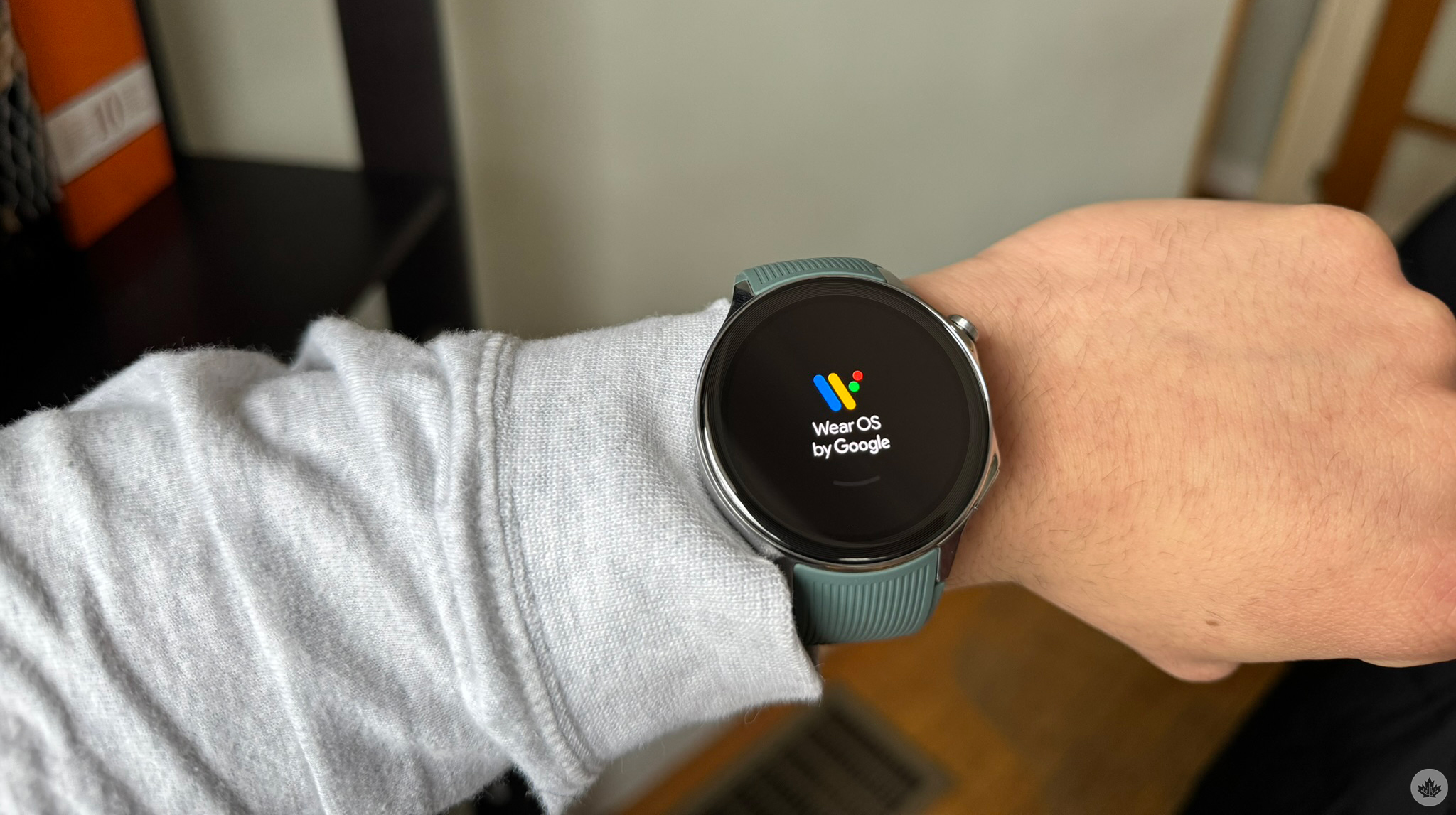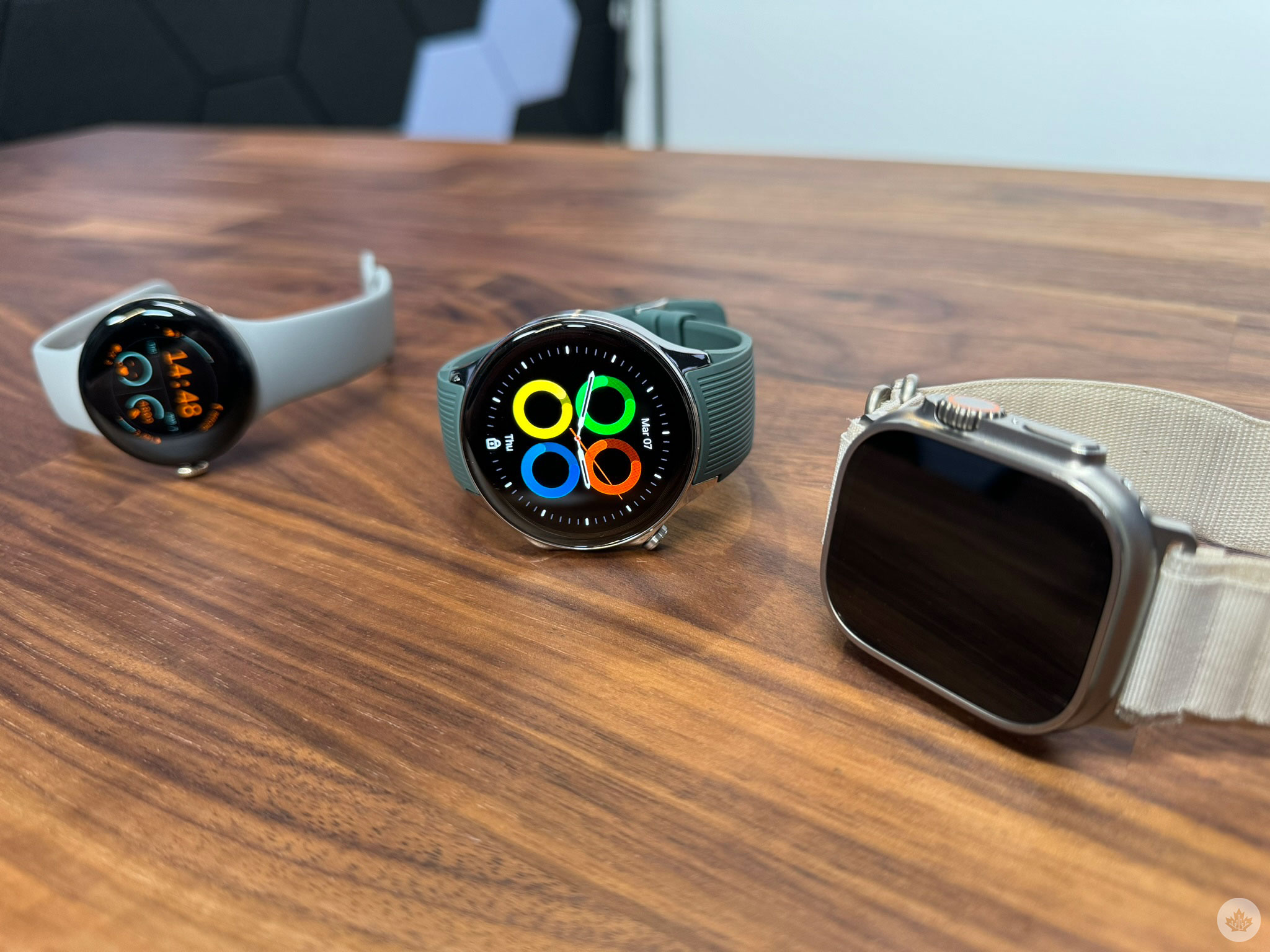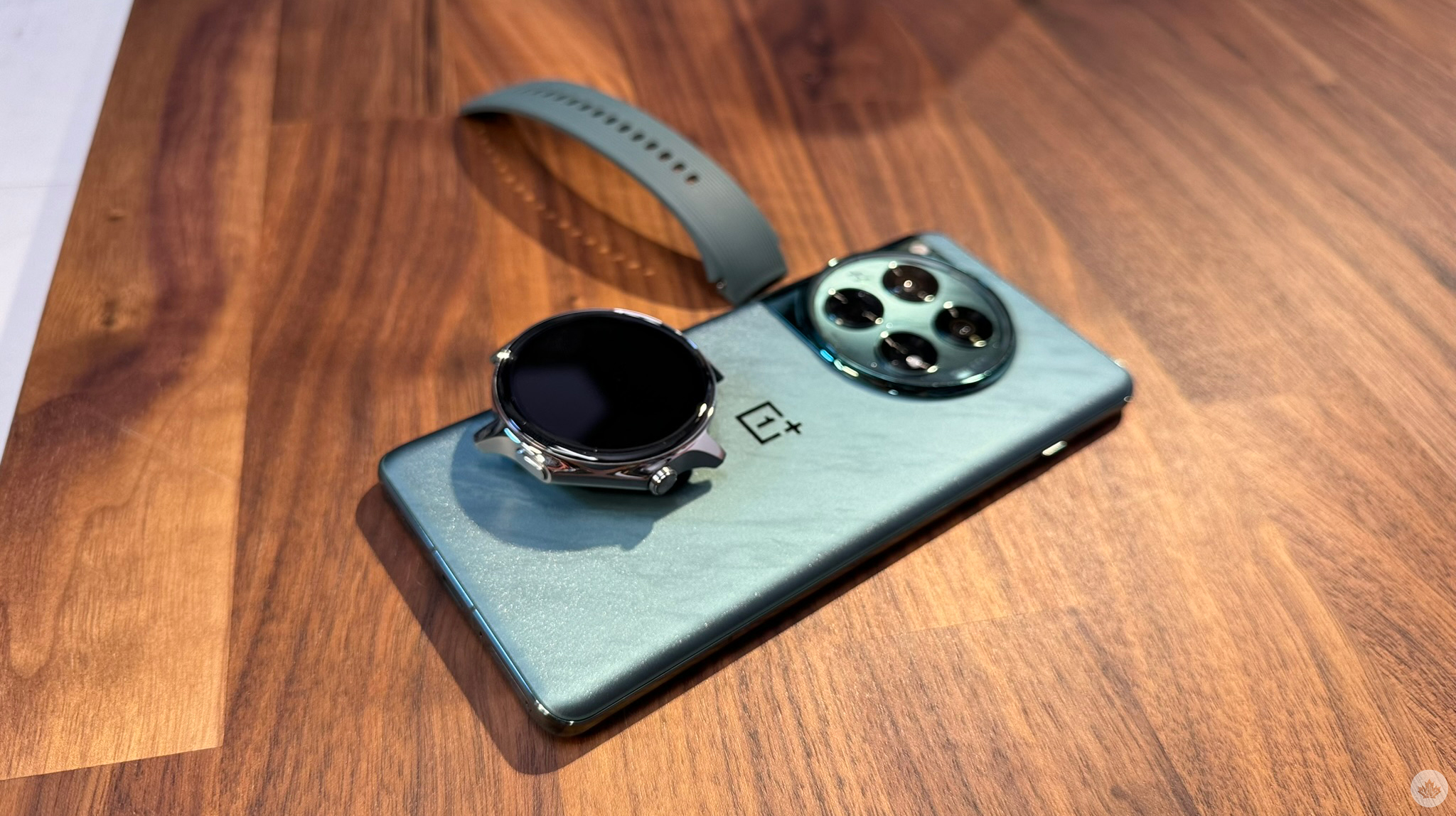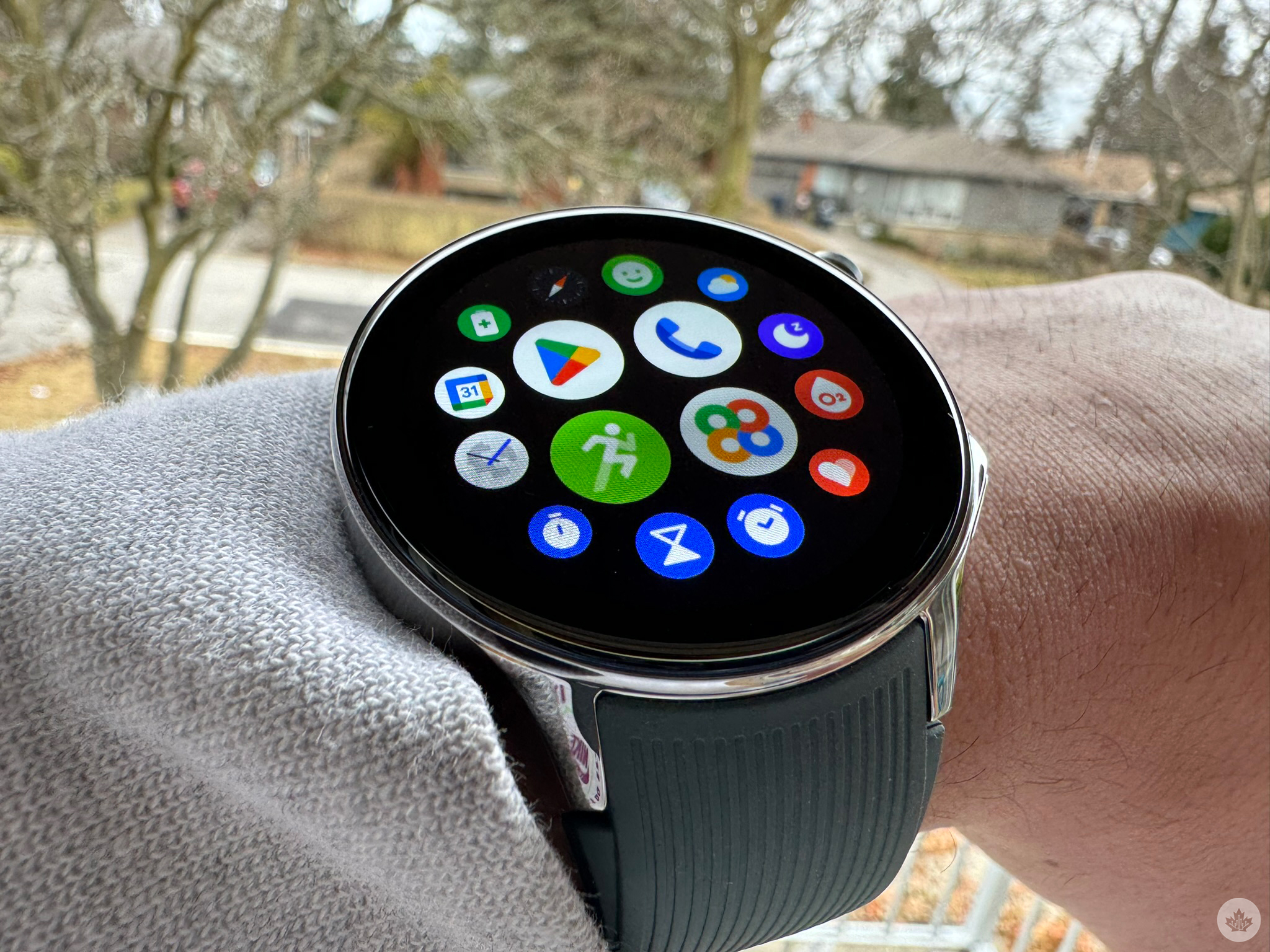OnePlus’ first smartwatch, the OnePlus Watch, released in March 2021. The reception the wearable received was lukewarm at best, mostly due to constant software glitches, very basic fitness features, limited app support, inconsistent notifications and more.
Three years later, the company is back with the OnePlus Watch 2 and aims not to make the same mistakes it made with its first-gen smartwatch.
The wearable features dual-chip architecture, complete with one chip for efficiency and easy tasks and the other for performance and intensive tasks.
Performance-aside, the wearable is a treat to look at, with its stainless steel body sapphire crystal screen, making the watch a suitable accessory for casual and formal wear.
The watch is clearly a solid upgrade over its predecessor, but it misses out on a few key features other watches offer, and that’s where it loses some points.
Premium look with a BIG display
The OnePlus Watch 2 features a large 1.43-inch circular AMOLED display encased in a stainless steel frame. The watch looks and feels premium, and despite its big size, it doesn’t weigh a lot.
Wrist fatigue is real and something that I often encounter with my Apple Watch Ultra. I’m not sure if it’s something related to the Watch Ultra’s rectangular shape, or because of its added weight, or maybe it just pinches my wrist’s nerves. Although the Watch 2 is huge, I haven’t really felt the need to take it off often, and when I do take it off occasionally for charging, my wrist doesn’t feel weird. Plus, the battery life on the Watch 2 is amazing, but more on that later.
The display is smooth and bright with vibrant colours and optimal viewing angles, making the watch easy to glance at for quick information. However, the large display pops, and I don’t mean that in a good way. I’d say I have an ‘average’ sized wrist, and the watch display looks huge on me. I’m not necessarily saying that’s a bad thing, but the 46mm circular size is just not my style, and I would have preferred a more subtle design. OnePlus, however, only sells the Watch 2 in one size.
Now, before I’m blasted for saying that I prefer “a more subtle design” and simultaneously exposed for using an Apple Watch Ultra as my daily driver, I would just like to say that there is something about the Ultra’s rectangular design that doesn’t make it pop as much, despite its bigger size. And I know there are many others who echo that opinion.
So, tl;dr, circular watch big. Circular watch flashy. But that’s okay if that’s what you prefer.
On the right, the watch features two buttons, both of which are customizable. On the top is a digital crown-like button that opens your app list or takes you back to your home screen. Pressing it two times takes you back to the last app that you were using, while long-pressing it opens Google Assistant. All these functions can be customized to your liking.
What I don’t like about the Digital Crown-like button is that it doesn’t let you scroll through your apps or menus when you rotate it. A fake Digital Crown is not nice.
Below that sits a multifunction button that defaults to opening workouts with one tap and opening your Google Wallet with two taps. This, too, is customizable.
The left of the watch features no buttons, and that is great. The flush stainless steel on the left gives the watch its premium look and actually makes it look more so like a regular watch.
The watch is IP68-rated, and can be submerged in water up to 50 meters, so it does check the durability boxes.
WearOS and dual-chip prowess
First things first, the OnePlus Watch 2 works only with Android devices. So no, iPhone users won’t be able to pair it with their iOS device. This is the same as the 1st-Gen OnePlus Watch.
The OnePlus Watch 2 runs on Google and Samsung’s WearOS 4, which solves one of the main problems that haunted the Watch 1 – limited app support. Access to WearOS allows the OnePlus Watch 2 to get its hands on almost all applications available to Google and Samsung’s wearables.
WearOS wouldn’t be justified if it wasn’t snappy. That’s why OnePlus deployed the Watch 2 with two processors. A Qualcomm Snapdragon W5 Gen 1 chip takes on the load of running the Wear OS software and performance-related tasks, while a secondary BES 2700 chip tackles the load of background activity and efficiency-related tasks.
 Essentially, the chip running Google’s WearOS runs intensive features like maps and music while the BES 2700 chipset takes on roles like running always-on display, background apps, displaying notifications and more.
Essentially, the chip running Google’s WearOS runs intensive features like maps and music while the BES 2700 chipset takes on roles like running always-on display, background apps, displaying notifications and more.
In use, tasks switch between the two chipsets seamlessly, and you, as the user, wouldn’t notice it. This makes the overall experience of using the watch smooth and snappy.
Battery champ
Battery life is arguably the best thing about the Watch 2, right behind WearOS 4 support.
On paper, the wearable boasts a 500mAh battery, which is in line with the Galaxy Watch 5 Pro, Apple Watch Ultra and the Apple Watch Ultra 2. It is also considerably bigger than the batteries in Samsung’s Galaxy Watch 6, Galaxy Watch 6 Classic, and the Pixel Watch 2.
 The difference in battery life, however, is evident when using the watch. I can confidently say that the OnePlus Watch 2 has among the best battery life in the wearable market right now, barring some of Garmin’s beasts.
The difference in battery life, however, is evident when using the watch. I can confidently say that the OnePlus Watch 2 has among the best battery life in the wearable market right now, barring some of Garmin’s beasts.
The watch has two main modes – ‘Smart Mode’ and ‘Power Saver ‘mode.
Smart Mode is on by default, and it is the mode you’ll use most of the time. OnePlus says that Smart Mode offers up to 100 hours of battery life, and well that is partly true. It normally took me three-and-a-half days to see the battery go from 100 percent to 20 percent, all while using it during workouts and sleep tracking. Once the watch reaches 20 percent, it automatically switches to the Power Saver Mode, which allows the watch to run for an additional 18 hours.
 It’s worth noting that Smart Mode doesn’t have always on display enabled by default, and using the feature does cut the battery life down by roughly half.
It’s worth noting that Smart Mode doesn’t have always on display enabled by default, and using the feature does cut the battery life down by roughly half.
Using the Power Saver Mode, the watch limits a lot of features, but that allows it to last roughly 10-12 days if you only use that mode instead of Smart Mode.
You can still have the watch connected to your phone via Bluetooth, and track fitness when in the Power Saver mode. You’ll also be able to use raise to wake, check your notifications on the watch, take incoming calls, and more.
This makes the Watch 2 a viable companion for trips where access to power might be sparse.
You can also switch between the two modes on the fly to get the most out of the watch. For example, I normally put the watch in Power Saver Mode when I’m in a vehicle. I get motion sickness if I look at screens in vehicles, so I know I won’t be looking at my watch for extended periods when travelling. The same goes for when I’m riding the subway.
 The Power Saver mode is also great for occasions when you wake up in the morning and realize that you forgot to put the watch on its puck the night before, and the watch is on its last 10 percent.
The Power Saver mode is also great for occasions when you wake up in the morning and realize that you forgot to put the watch on its puck the night before, and the watch is on its last 10 percent.
However, if you prefer not to use the toned-down mode, a bonus is that charging doesn’t take long, either. The watch goes from 10 percent battery to 50 percent in roughly 20 minutes, and even with the Smart Mode and heavy usage, 50 percent will easily get you through the day.
Tracking via the OHealth app
The OnePlus Watch 2 is easily one of the best sub-$400 watches for walkers and runners. Apart from the regular heart rate and step counter, the watch also calculates your average walking cadence, pace, heart-rate zones, pace for each km, total ascent, and more. If you’re a metric watcher, the OnePlus Watch 2 can give you a lot of insights about your walking and running workouts.
What’s also noteworthy is that if you’re into resistance or strength training, the watch will allow you to select individual body parts to work out. For reference, the watch has specific workout tracking modes for chest exercises, back exercises, upper and lower limb exercises, shoulder exercises, core exercises, and more. In comparison, the Apple Watch Ultra only offers two strength training modes, though both watches offer roughly the same metrics.
It also offers several sport tracking modes, from badminton, which counts your swing speed, shots, total backhands, overhands and underhanded, to Golf, Swimming, Skiing, and more.
While fitness tracking is top-notch, the watch does leave some features to be desired on the health tracking side. All the regular features, like sleep, stress tracking, and SpO2 tracking, are available, though more advanced features, like ECG, temperature sensing, and fall detection, aren’t available. And if you’re looking at the watch to track menstrual cycles, you’d want to look elsewhere.
A summary of all the health and fitness tracking data can be viewed directly on the watch, though the OHealth app presents a more detailed view of the metrics in a clear and easy-to-understand format.
Overall, health and fitness tracking on the OnePlus Watch 2 paired with the OHealth app offers a well-rounded experience, though the ultimate decision depends on your individual needs.
